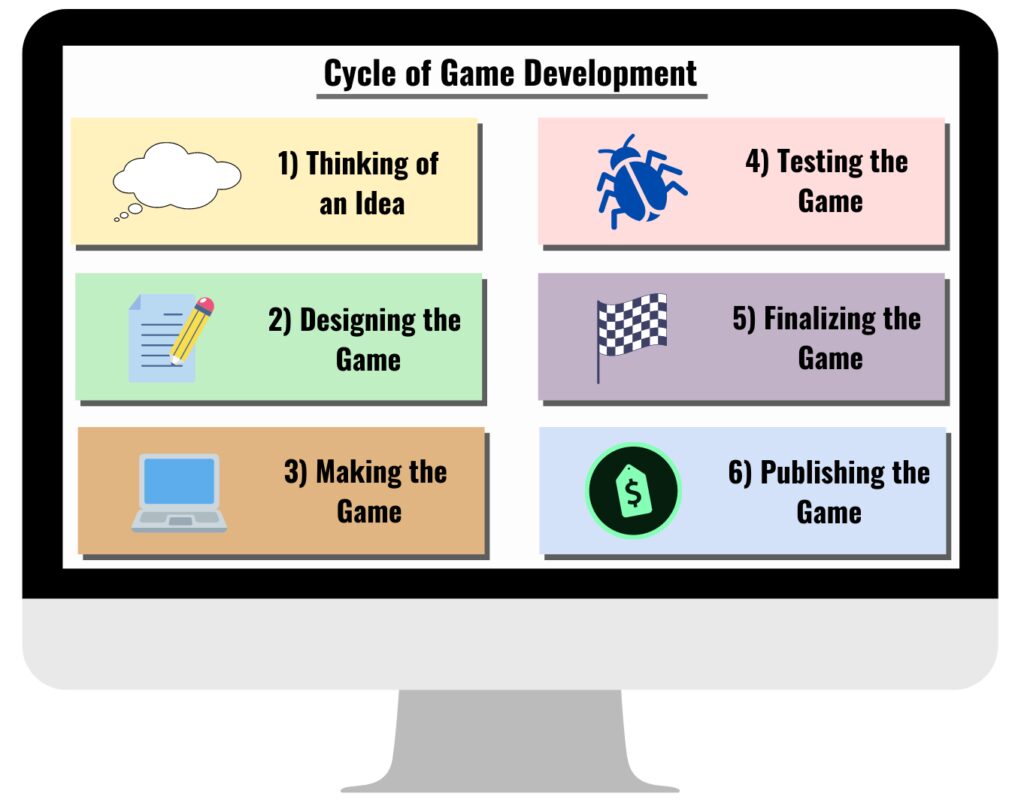This article discusses the steps and principles of game development, from conceptualization to release. The steps involve brainstorming, prototyping, production, quality assurance, and release. The principles include gameplay, storyline, graphics, sound, game mechanics, and interface. The gameplay must be fun, engaging, and challenging, while the storyline should be compelling and make sense. Graphics and sound are essential for creating an immersive gaming experience, and game mechanics must provide a good balance between challenge and fun. The interface should be simple and easy to use. By considering these principles, game developers can create enjoyable games that keep players entertained and engaged.
From Idea to Game: Steps and Principles of Game Development
Introduction
Game development is an extensive process that involves many stages and principles. The following article will discuss the steps and principles of game development, from conception to final product.
1. Conceptualization
The first step in game development is conceptualization. This stage requires the development team to brainstorm and come up with a core concept for the game. This could be a simple gameplay mechanic, a character or storyline.
2. Prototyping
Once the conceptualization stage is complete, the development team will start prototyping. This involves creating a playable version of the game that can provide a clear idea of how the game will play.
3. Production
Once the development team has a functional prototype, the actual production can begin. In this stage, they will start creating the assets, writing code, and creating sounds, and music.
4. Quality Assurance
Once the production of the game is complete, the development team will start a Quality Assurance (QA) phase. This stage is crucial as it involves testing the game for bugs, glitches, and other issues.
5. Release
Once the game has been thoroughly tested, it’s time for release. This could involve launching the game on digital marketplaces, or physical distribution channels.
Principles of Game Development
1. Gameplay
The gameplay is the most critical aspect of any game. The game developer needs to make sure that the gameplay is fun, engaging, and challenging. The gameplay must be easy to understand, but challenging to master, ensuring players stay engaged.
2. Storyline
The storyline is critical to get the players’ attention and build an emotional connection with the game. The game developer needs to make sure that the storyline is compelling and makes sense.
3. Graphics
The game’s graphics are an essential component of the player’s overall gaming experience. The graphics can either attract or repel players, so it’s essential to create visually stunning graphics that draw the player into the game’s world.
4. Sound
Sound can play a crucial role in creating an immersive gaming experience. The game developer needs to create appropriate sound-effects and music for different parts of the game.
5. Game Mechanics
Game mechanics are essential, as they decide how the game will feel and play. Game developers must ensure that the mechanics are intuitive, easy to understand, and provide the player with a good balance between challenge and fun.
6. Interface
The game’s interface is a key part of delivering a smooth gaming experience. The interface needs to be simple and easy to use, so players can quickly understand the game’s mechanics and navigate through different parts of the game.
Conclusion
Game development requires extensive and skilled teams and resources to ensure success. The principles of game development discussed in this article must be considered in every phase of game development to create the desired final product. By following these steps, game developers can create immersive and enjoyable games that keep players entertained and engaged for hours on end.
